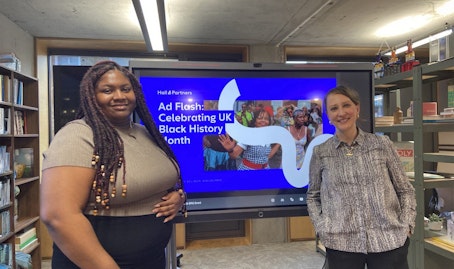
There will always be a section of society that chooses the sustainable option, even when it’s more expensive or a bit of a hassle. But many people need to be given more reasons than it simply being ‘the right thing to do’.
At Too Good To Go, this philosophy is at the heart of how we empower people to fight food waste.
By way of background, Too Good To Go is an app that lets people buy unsold food from bakeries, restaurants, hotels and supermarkets to stop it from being thrown away. Users get the food at a great price but, unlike other food apps, they can’t choose exactly what they’ll get, and it’s not delivered to their front door. Instead, they buy a ‘Magic Bag’ of mystery food and pick it up during a collection window set by the store.

When we’re pitching a sustainable solution, we have to make sure any perceived shortcomings are outshined by strengths that extend far beyond being ‘eco’. After all, if our solution is to make a genuine impact, it needs to appeal to as many people as possible.
As well as being the ‘eco’ option, it also has to be the ‘cost-effective’ option. Or the ‘fun’ option. Or the option people are really proud to have chosen.
At Too Good To Go, we’ve learnt to do all of these things.
The UK has a (totally nonsensical) 10-million-tonne-a-year food waste problem. We spend six times as much on disposing of food as we do on funding the police. We use an area the size of Wales to produce food that ultimately never gets eaten. All of this, while one in nine people in the world goes to bed hungry every night.
The environmental, financial and social case for fighting food waste is clear. But on those days when you’ve finished work late, you’re hungry and it’s raining … the case for having a favourite takeaway delivered to your door is pretty clear too.
So, we have to give people other reasons to choose Too Good To Go.
1. Promise the feeling of pride
Researchers at Princeton University discovered that when people knew a sustainable decision would make them feel proud, they were more likely to follow through with it.
By helping people make this connection, we give sustainable options an advantage. Weave the idea into marketing messages. Reinforce it in post-sale communications. Hammer home the thought that by choosing the eco-friendly option, your customer has done a great thing.
When a sustainable decision makes people feel proud, they’re more likely to follow through with it
2. Find a fun angle
While some could perceive the mystery element of a Too Good To Go ‘Magic Bag’ as an inconvenience, we try to help people see the fun side. After all, what’s more fun than walking into a store and leaving with a bag bursting with surprise cakes? Discover a way of making your sustainable solution put a smile on people’s faces, and it will transform into the most enticing option.
3. Make it as widely accessible as possible
A quick glance at the eco options in supermarkets – ocean-friendly soaps and non-toxic cleaning products – can give the impression that sustainable consumption is a privilege afforded only to the wealthy. But is that really good enough anymore?
To be truly sustainable, a product should always create a win-win-win effect. It should be a win for the consumer, who gets to access a great product. It should be a win for the producer, who’s rewarded for their innovation. And, most of all, it should be a win for the planet.
It’s not enough to simply give people a sustainable option and shrug when they don’t use it. If we genuinely want our sustainable option to succeed, we have to find a way to make it truly accessible – and truly irresistible.








